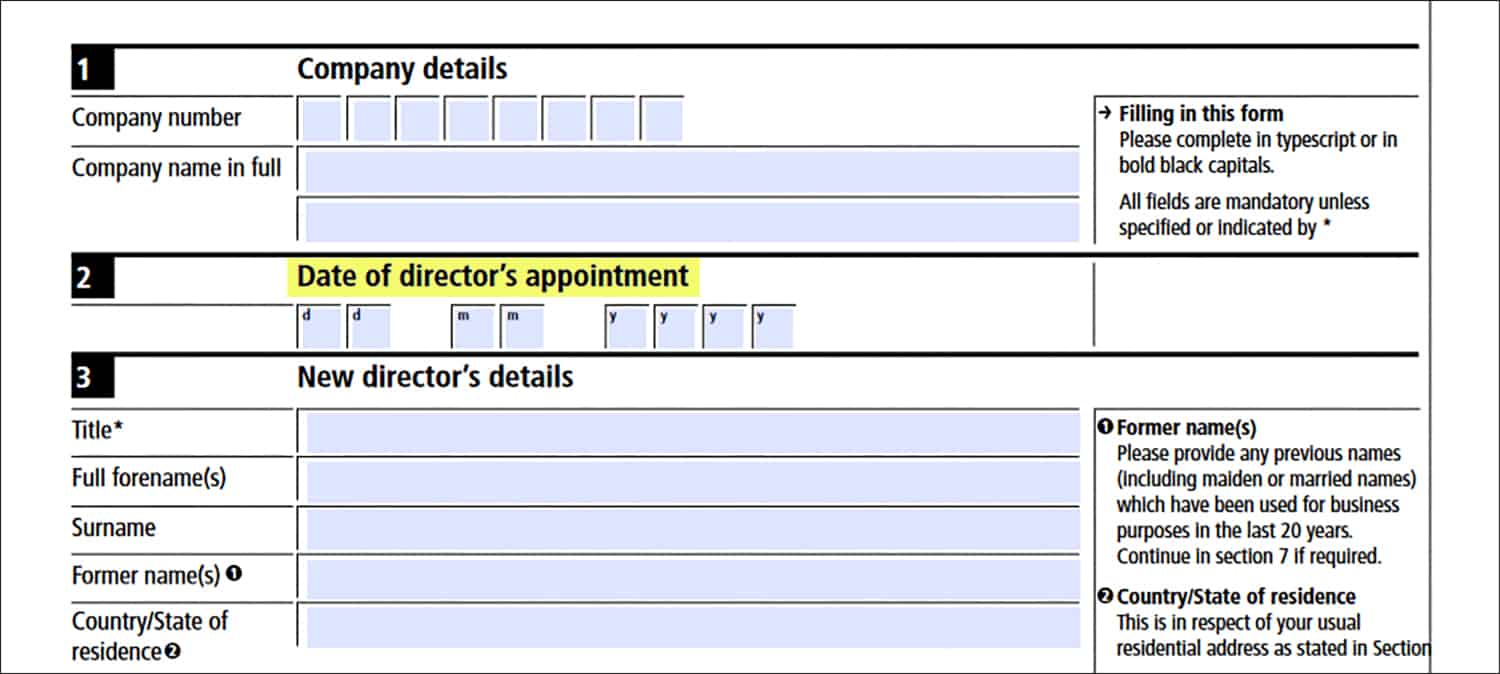When appointing a director to an existing limited company, you must provide a director’s appointment date. The common assumption is that this is the date that the appointment form is being completed. However, this is wrong. In this blog, we’ll explain why.
What is the director’s appointment date?
As the name would suggest, this is the date that a director is appointed to a company, and this is where confusion may come in, as this is not the date that the AP01: Appointment of director form is completed.
When is a director considered ‘appointed’?
A director is appointed on the date that the company’s Register of Directors is updated. This is done before Companies House is notified of the appointment.
We cover the director appointment process in more detail in our Appointing and removing a company director post; however, here’s how to appoint a new director once a candidate has been put forward:
1. The new director must sign a letter of consent
This confirms that they want to act as a director for the company.
2. The company’s shareholders vote on the director’s appointment
Via a vote on an ordinary resolution. If more than 50% of the votes are in favour of the appointment, the resolution is passed (this can sometimes also be approved by the board of directors).
3. The appointment is formalised
This is done by entering the appointment into the Register of Directors. As soon as the Register of Directors has been updated, the director is considered appointed. The date that this is done is the appointment date.
4. Companies House needs to be notified about the appointment
The AP01 form should be completed and submitted to Companies House within 14 days of the appointment date. This can be done using the paper form (this takes longer than the online methods), Companies House WebFiling, or our own Online Company Manager.
Providing the director’s appointment date
How you provide the appointment date will obviously depend on how you choose to notify Companies House of the director appointment.
If you are using the AP01: Appointment of director paper form, the relevant field appears in section 2:

If you are using Companies House WebFiling, the ‘appointment date’ is requested just before the end of the process:
 And if you are using our Online Company Manager, the dedicated ‘Register Entry Date’ field can be found on the first page of the director appointment process:
And if you are using our Online Company Manager, the dedicated ‘Register Entry Date’ field can be found on the first page of the director appointment process:

Director’s appointed at the time of incorporation
If a director is being appointed at the same time as the company formation, an appointment date does not need to be provided. This will automatically be set as the same date as the company’s incorporation date.
We can help you appoint your company directors… the right way
As we have touched on in this post, despite common misconception, appointing a director isn’t a simple case of just completing the AP01 form (or its online alternatives). There are various steps that need to be taken to ensure that the appointment is done in a compliant, legal manner.
With our Director Appointment & Resignation Service, available for only £29.99, we’ll take care of everything that’s required to appoint (or resign) a director in the correct way. The service includes:
- The letter of consent (or letter of resignation)
- The appropriate board resolution
- The preparation and filing of the AP01 form (or TM01 form)
Once we have all the information we need, appointments (and resignations) are normally processed within only 2-3 working days.
Thank you for reading
To summarise, the director’s appointment date is not the date that the Companies House AP01 form, or its online alternative, is completed. It is the date the appointment was entered into the company’s Register of Directors, or if a director is being appointed at the same time as the company is being formed, the appointment date is the same as the date of incorporation.
We hope you have found this post helpful. Please leave a comment if you have any questions.
Please note that the information provided in this article is for general informational purposes only and does not constitute legal, tax, or professional advice. While our aim is that the content is accurate and up to date, it should not be relied upon as a substitute for tailored advice from qualified professionals. We strongly recommend that you seek independent legal and tax advice specific to your circumstances before acting on any information contained in this article. We accept no responsibility or liability for any loss or damage that may result from your reliance on the information provided in this article. Use of the information contained in this article is entirely at your own risk.








Join The Discussion